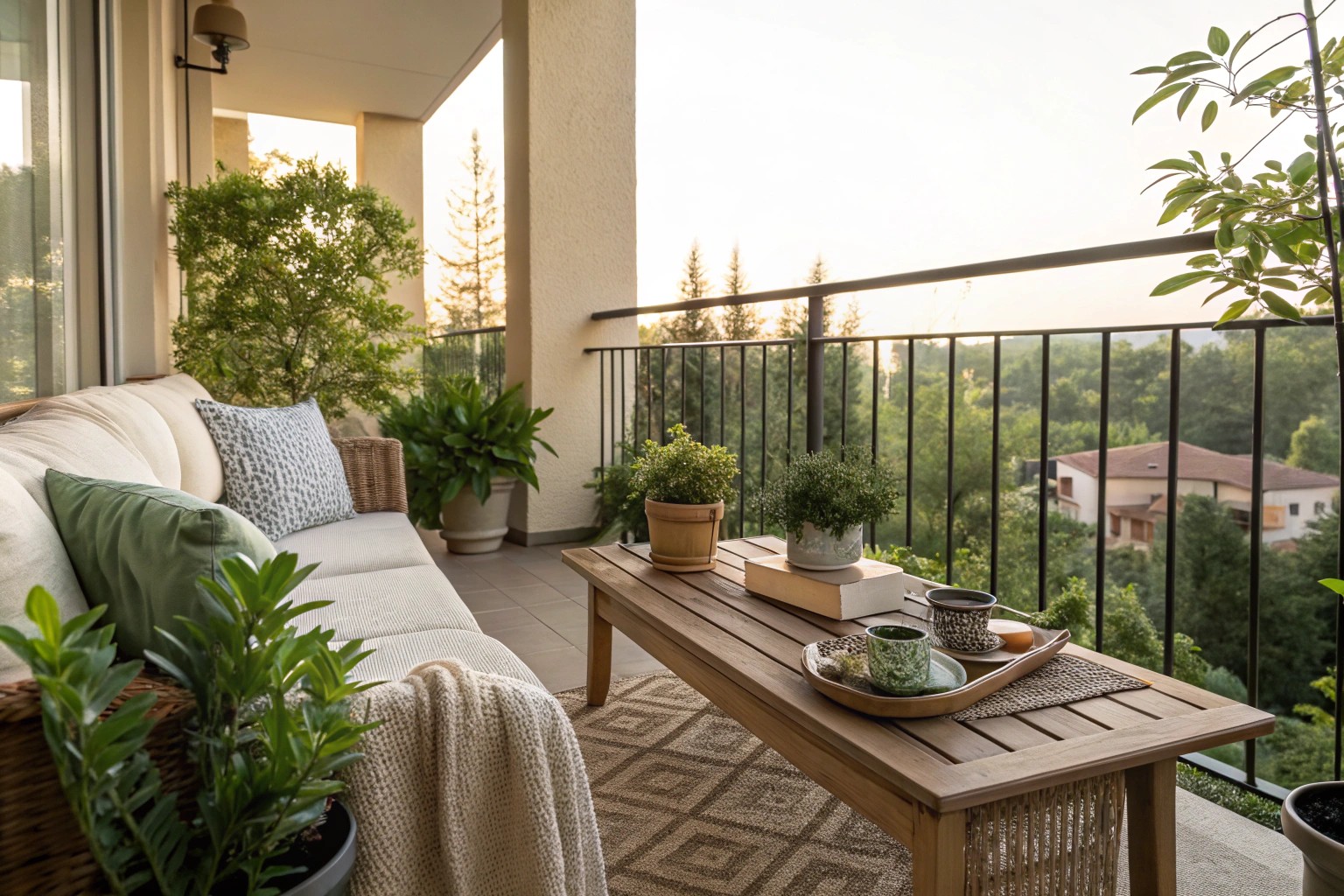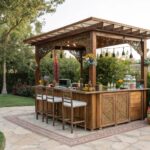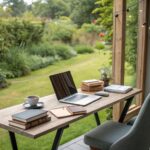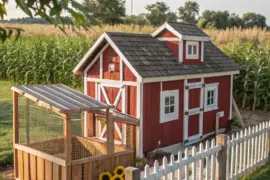There’s something magical about sipping that first cup of coffee outdoors as gentle morning light filters through leaves and the day’s possibilities stretch before you. A thoughtfully designed morning coffee garden creates a daily ritual space that can transform how you begin each day, whether on a tiny apartment balcony or in a sprawling backyard retreat.
The Psychology of Morning Garden Spaces
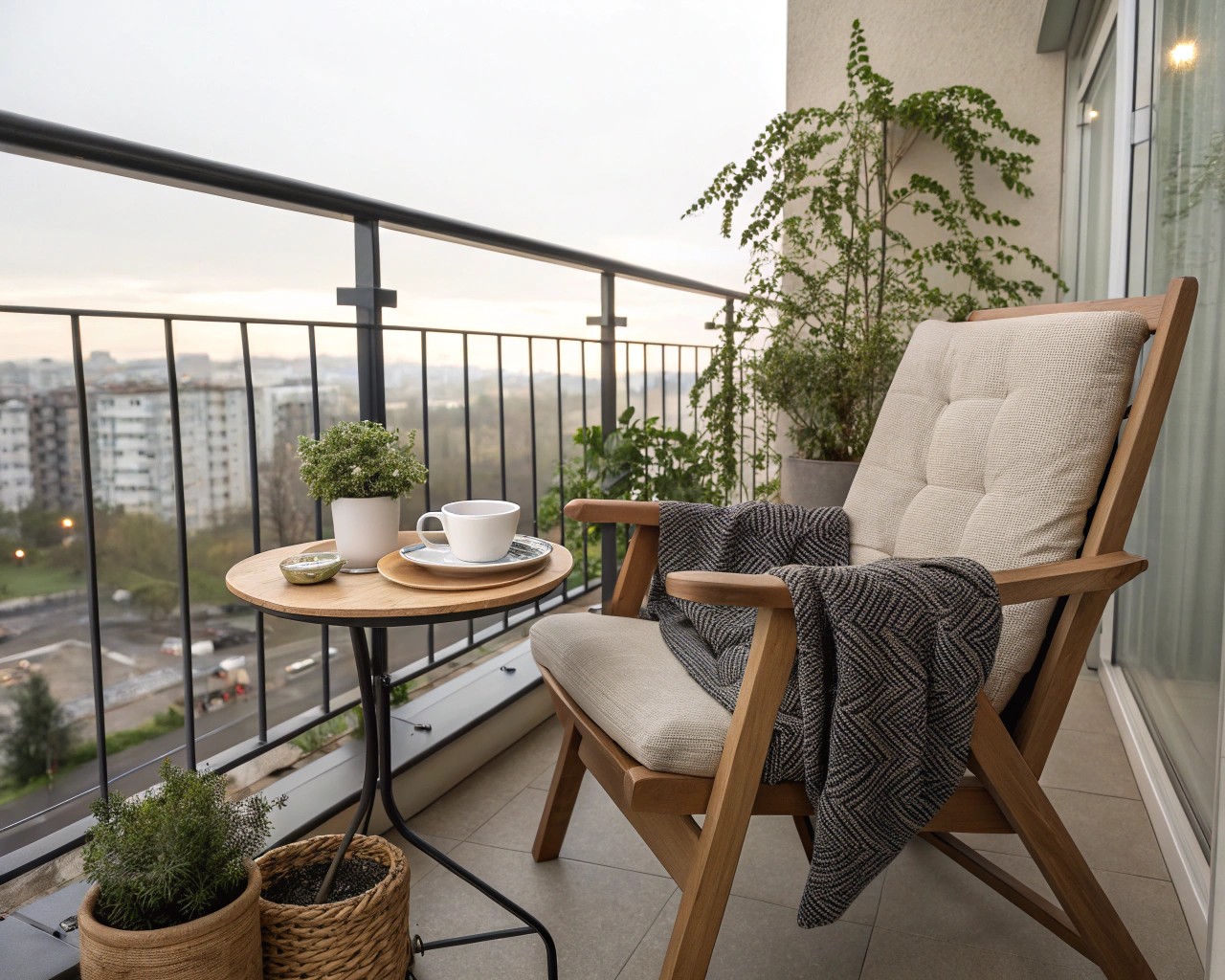
The morning coffee ritual extends beyond caffeine consumption—it’s about creating a transitional moment between sleep and activity. When designed intentionally, outdoor coffee spaces engage all senses and help establish positive daily patterns.
You might not realize how significantly your environment affects your morning mindset. I’ve witnessed countless clients transform their daily outlook after creating dedicated morning spaces. One client in Seattle noted, “My coffee garden gives me 20 minutes of peace that anchors my entire day—it’s no longer a luxury but a necessity.”
Morning garden spaces work on multiple levels:
- They connect us with nature’s rhythms and seasonal changes
- Natural light helps regulate our body clock and improve mood
- Sensory experiences (birdsong, gentle breezes, plant fragrances) awaken the mind gradually
- A dedicated ritual space creates healthy boundaries between relaxation and productivity
Essential Design Elements for Your Coffee Garden
Finding the Perfect Location

The ideal coffee garden starts with thoughtful placement. Consider these factors when selecting your space:
- Morning sun patterns (eastern exposure typically provides gentle illumination)
- Privacy from neighbors and street visibility
- Protection from wind and morning dew
- Proximity to your indoor coffee preparation area
- Views within your garden and beyond
- Ambient noise levels during morning hours
One Philadelphia client was determined to place her coffee garden adjacent to her rose collection until we conducted a simple morning observation exercise. She discovered that area received harsh direct sun and street noise during her preferred 7:00 AM coffee time. We relocated to a corner spot with dappled shade and background sounds from a neighbor’s fountain—creating the peaceful atmosphere she actually wanted.
Seating: The Foundation of Comfort
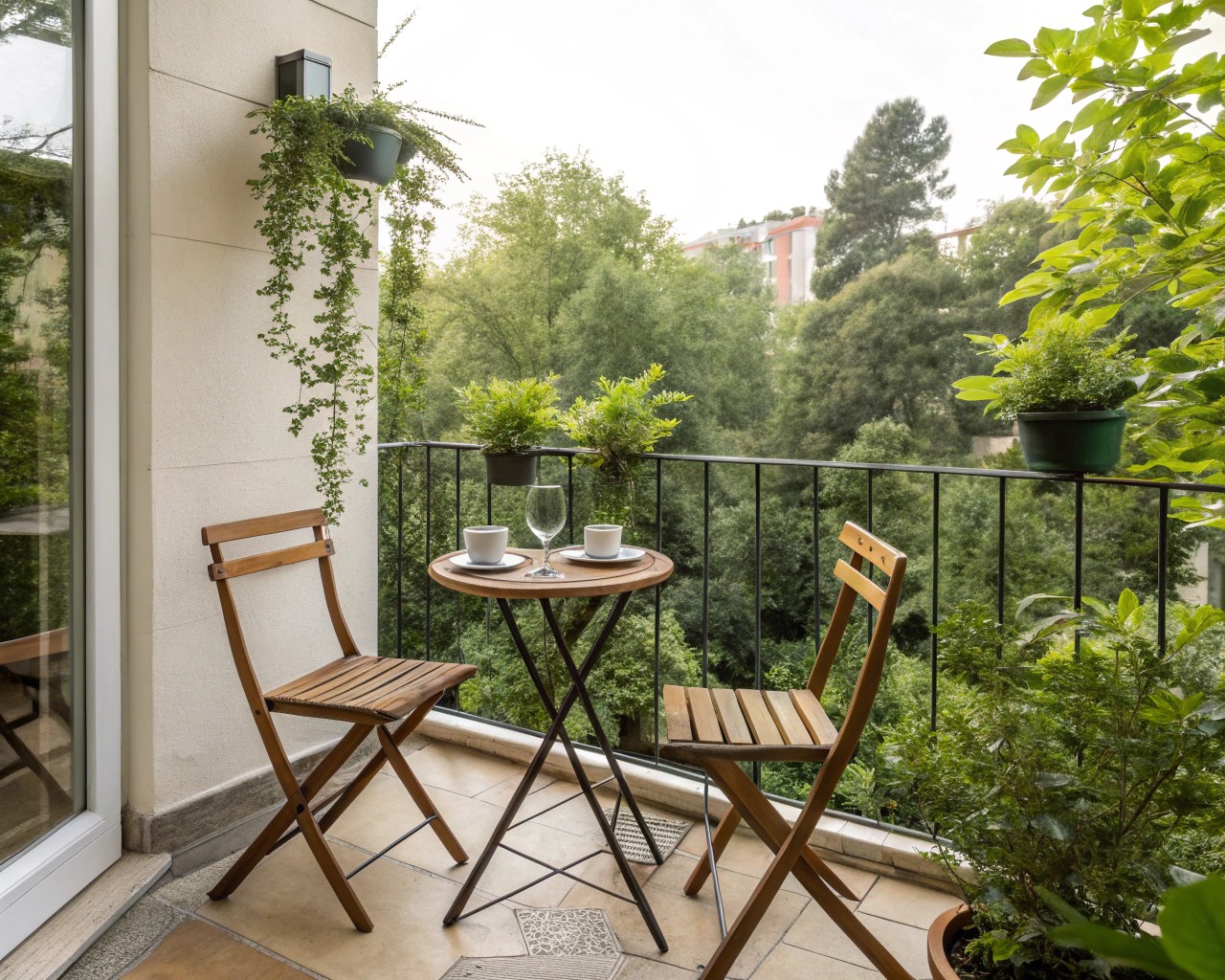
Your seating choice fundamentally shapes your morning experience:
| Seating Type | Best For | Advantages | Considerations | Maintenance |
|---|---|---|---|---|
| Adirondack Chair | Solo relaxation | Wide arms ideal for coffee cup, comfortable recline | Large footprint, difficult to exit | Annual cleaning, refinishing every 2-3 years |
| Bistro Set | Couples, small spaces | Compact, often foldable, classic look | Limited comfort for extended sitting | Regular cleaning, rust check for metal sets |
| Garden Bench | Flexible seating | Accommodates multiple people, architectural element | Requires cushions for comfort | Material-dependent maintenance |
| Lounge Chair | Extended relaxation | Ultimate comfort, often adjustable | Larger footprint, higher cost | Cushion storage, frame care |
| Built-in Seating | Space efficiency | Custom fit to space, can include storage | Permanent, less flexibility | Generally low maintenance |
| Hanging Chair | Playful spaces | Movement enhances enjoyment | Requires sturdy mounting point | Regular safety checks |
In practice, we often combine seating types to accommodate different needs. A Chicago family’s coffee garden includes a primary loveseat for parents plus floor cushions that children can drag out for family morning time—an arrangement that evolves as their needs change.
Practical Elements That Enhance Function
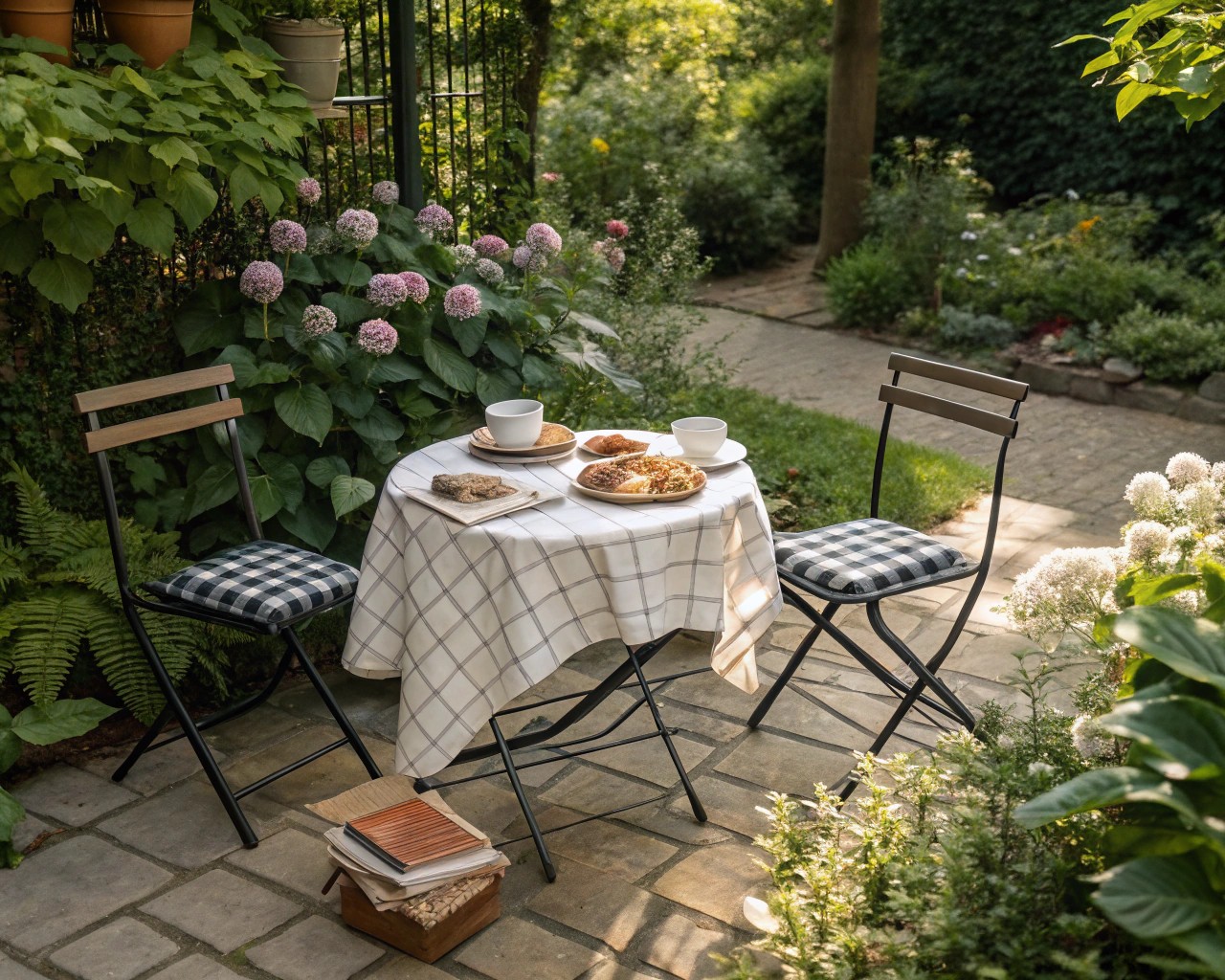
The functional details of your coffee garden significantly impact daily enjoyment:
- Stable, flat surface for placing coffee cups and breakfast items
- Easy-to-clean materials that withstand inevitable spills
- Protection from morning dew and moisture
- Accessible storage for cushions, throws, and reading materials
- Weather protection appropriate to your climate
- Convenient pathway from kitchen
When designing for a Boston client with limited mobility, we incorporated a rolling bar cart to transport coffee essentials to her garden space. This simple addition transformed her routine from challenging to effortless. We often find these practical considerations make the difference between spaces that look good and spaces that actually get used daily.
Creating Coffee Gardens for Different Spaces
Urban Balconies and Small Patios
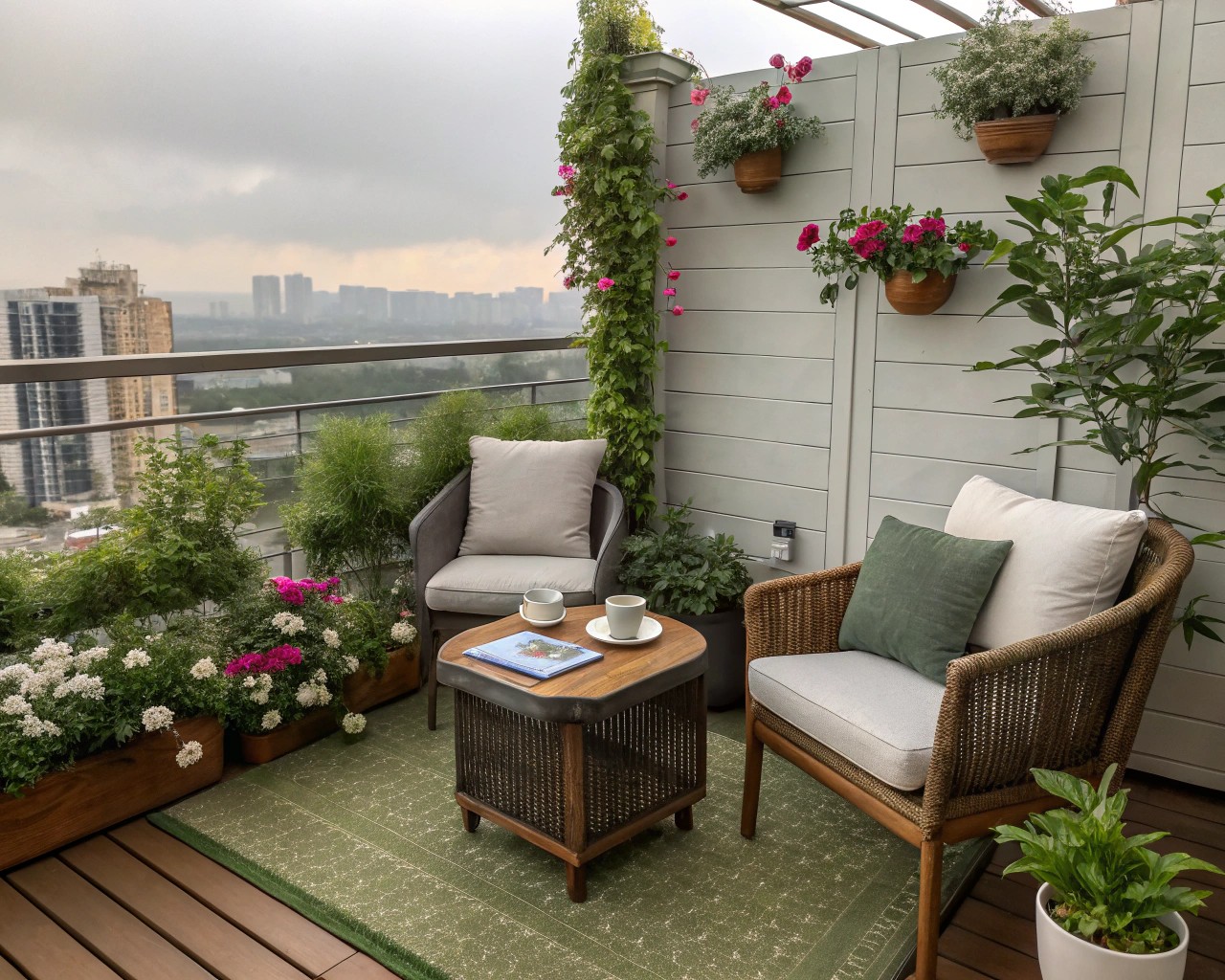
Limited space requires creative solutions but can yield incredibly rewarding coffee gardens:
- Choose multi-functional furniture (storage benches, folding tables)
- Use vertical space with wall planters and hanging elements
- Create implied boundaries with strategic container arrangements
- Consider privacy screens that filter rather than block light
- Keep the color palette simple and cohesive
- Employ reflective elements to amplify light and create depth
A Brooklyn client transformed her 4×6-foot balcony into a morning sanctuary using a wall-mounted fold-down table, a compact armchair, vertical herb planters, and string lights. She explained that even though the space is tiny, it feels like a secret garden where the bustle of the city disappears while she enjoys her morning coffee.
Suburban Backyards and Patios
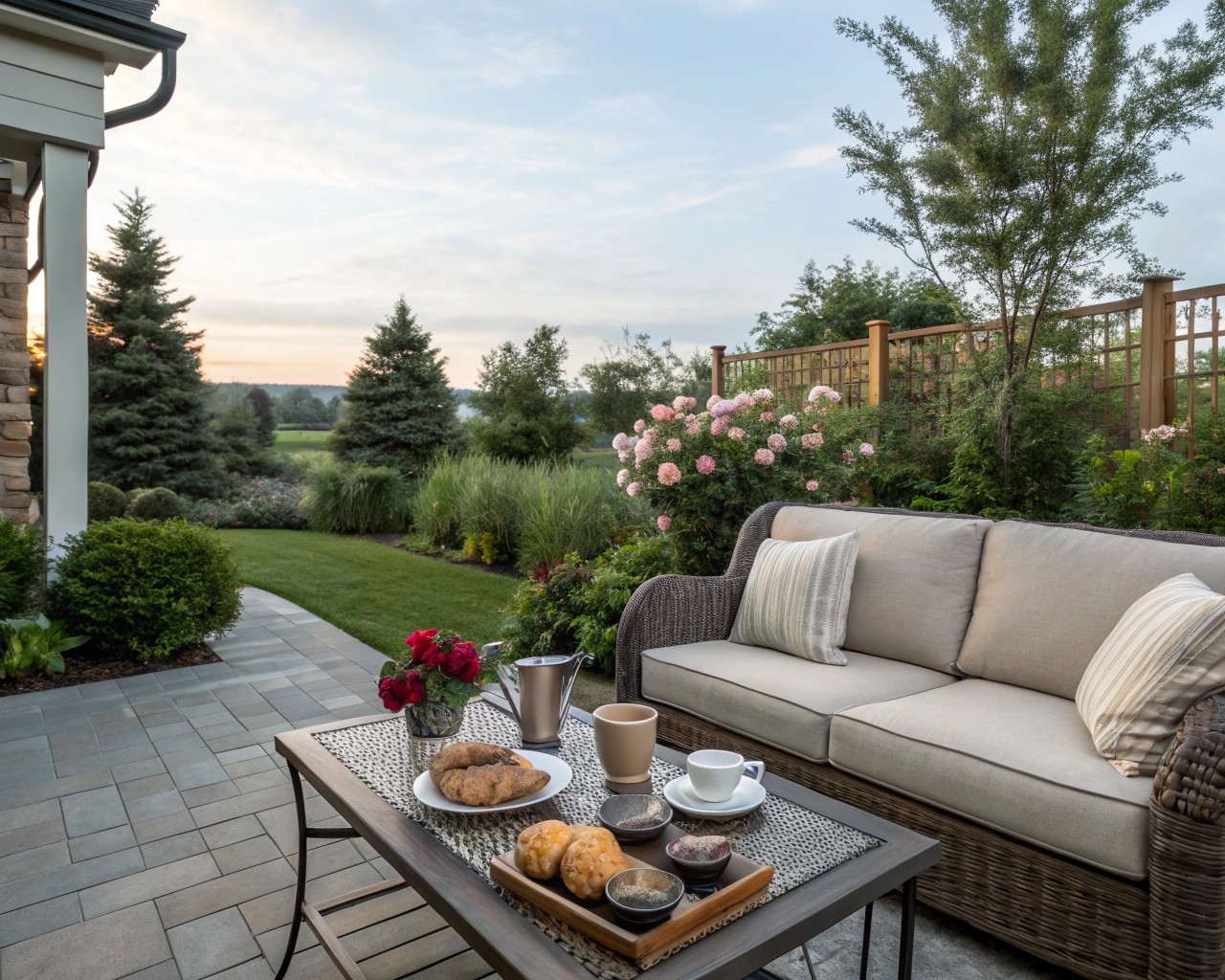
Mid-sized spaces offer flexibility to create dedicated morning retreats:
- Define a specific “room” for morning coffee separate from other garden functions
- Use plantings or hardscaping to create boundaries and transition zones
- Balance proximity to the house (for convenience) with distance (for perspective)
- Include storage for morning comforts
- Design for seasonal flexibility with adaptable shade options
- Create visual connections to other garden features
The most successful suburban coffee gardens I’ve designed incorporate a sense of “destination” while remaining practical. For a Denver family, we positioned their coffee patio to receive morning light while maintaining sightlines to the children’s play area—allowing parents to enjoy quiet moments while still supervising morning activities.
Rural and Expansive Gardens
Larger spaces provide opportunities for more ambitious coffee garden concepts:
- Create destination spaces that require a short journey
- Design paths that make the walk part of your morning ritual
- Consider multiple coffee spots for different seasons or moods
- Incorporate larger elements like pergolas, pavilions, or fire features
- Frame views of natural landscape features
- Plan for practical maintenance requirements
A Virginia client requested a coffee pavilion overlooking her pond, accessible via a quarter-mile garden path. “Walking to my coffee spot has become as important as being there,” she reports, noting that those few minutes of transition completely alter her morning start.
Case Studies: Real Coffee Gardens That Work
Sarah’s Brooklyn Balcony Transformation
When Sarah approached me about her 5×8-foot Brooklyn balcony, she was ready to abandon outdoor living entirely. “It’s too small, too noisy, and gets too much afternoon sun,” she complained. After observing the space at different times, we discovered mornings offered perfect conditions with soft eastern light and reduced street noise.
We transformed her space with:
- A wall-mounted folding cedar table for coffee and breakfast
- A compact armchair with hidden storage underneath
- Vertical herb gardens providing greenery and morning scents
- A small bubbling water feature to mask remaining street noise
- Weatherproof string lights for darker mornings
- A light-colored outdoor rug to brighten the space
Sarah now starts each day with 20 minutes in her coffee garden before commuting. She tells me this transformation has completely altered her relationship with the city, providing a vital moment of peace before she dives into the day’s demands.
The Miller Family’s Multi-Function Space
The Millers faced a common suburban challenge: creating adult space within a family-focused backyard. With young children and limited square footage, they needed their morning coffee area to serve multiple functions.
Our solution included:
- A slightly raised deck platform creating a distinct “adult zone”
- Comfortable seating that could be reconfigured for evening gatherings
- Child-friendly, spill-resistant materials that still felt sophisticated
- Strategic plantings creating privacy from neighbors
- A simple pergola with adjustable shade cloth
- A small outdoor-rated cabinet for morning essentials
Mrs. Miller reports that their morning coffee ritual has become sacred family time. “The kids know that morning time on the deck is for quiet voices and peaceful activities. They bring books or drawing materials while we have our coffee—it’s teaching them about respecting others’ needs while still being together.”
John’s Destination Coffee Garden
John, a retired professor in rural Vermont, wanted a dedicated space to start each day with reflection and writing. His large property offered numerous possibilities, but finding the perfect balance of views, protection, and accessibility proved challenging.
We designed:
- A simple 10×12-foot timber-frame pavilion overlooking mountains to the east
- Removable glass panels for three-season protection
- A small wood stove for chilly mornings
- Built-in benches with hidden storage
- A writing desk positioned for inspirational views
- A dedicated path with sensory plants along the journey
John’s morning ritual now includes a 10-minute walk through gardens to reach his coffee pavilion, where he spends the first hour of each day writing. He explains that the journey to his coffee garden has become as significant as the destination itself, offering valuable time to transition into the day.
Planting for the Ideal Morning Experience
The botanical elements of your coffee garden significantly impact your sensory experience. I design morning gardens with all senses in mind:
Aromatic Plants for Morning Enjoyment
Scent is powerfully connected to mood and memory. Consider these aromatic options:
- Herbs: Rosemary, mint, lavender, and thyme warm in morning sun to release scent
- Flowering Vines: Jasmine and honeysuckle offer sweet fragrance
- Roses: Varieties like ‘Gertrude Jekyll’ release stronger scent in morning hours
- Coffee Plants: The actual Coffea arabica makes a beautiful container plant in warmer zones
- Native Flowering Plants: Attract pollinators, adding gentle activity and subtle fragrances
Position scented plants where morning warmth will release their oils, or where light breezes will carry fragrance to your seating area. One Connecticut client’s coffee garden featured strategically placed lavender and mint along the pathway to her seating area, creating an aromatic journey each morning.
Visual Interest in Morning Light
Morning light has unique qualities that enhance certain plants:
- Ornamental Grasses: Capture and diffuse early light (Miscanthus, Panicum, Muhlenbergia)
- Translucent Leaves: Japanese maples, certain hostas, and heucheras glow when backlit
- Morning-Opening Flowers: Morning glories, dayflowers, and certain daylilies
- Dew-Catching Plants: Lady’s mantle, lamb’s ears, and fuzzy-leaved plants sparkle briefly
- Strong Silhouettes: Sculptural plants like cardoons or artichokes cast dramatic shadows
I often emphasize to clients that mornings are about appreciating transient moments—the brief way light filters through grasses for fifteen minutes or how dew highlights a spider web temporarily. These fleeting experiences can become powerful anchors in your daily routine.
Sound Elements for Morning Ambiance
The soundscape of your coffee garden affects your experience profoundly:
- Water Features: Small fountains or bubbling rocks provide gentle background sounds
- Wind-Responsive Plants: Bamboo, aspen, and paper birch rustle pleasantly
- Bird-Attracting Elements: Feeders, baths, and native berry plants bring natural songs
- Sound Barriers: Dense plantings buffer unwanted neighborhood noise
- Wind Chimes: Carefully selected for pleasing tones that don’t become annoying
A Philadelphia client’s townhouse coffee garden incorporated a small wall fountain specifically calibrated to mask street noise without requiring conversation raising. The result was a surprisingly peaceful space despite its urban setting.
Seasonal Adaptations for Year-Round Enjoyment
One of the biggest challenges for morning coffee gardens is extending their usefulness throughout the year. Here’s how to adapt your space for year-round enjoyment:
Spring Coffee Gardens
Spring mornings can be damp and variable but offer incredible sensory experiences:
- Add early-blooming bulbs for color and fragrance
- Incorporate plants with interesting emergent growth
- Consider temporary windbreaks for changeable weather
- Use quick-dry fabrics for cushions and pillows
- Add bird feeders to enjoy returning migratory species
Summer Coffee Gardens
Summer mornings may require protection from heat and intense light:
- Prioritize shade structures or shade-providing plants
- Include cooling elements like water features
- Choose light-colored furniture that won’t overheat
- Add early-morning blooming plants
- Consider outdoor fans for air circulation
Fall Coffee Gardens
Fall brings rich sensory opportunities for morning enjoyment:
- Incorporate plants with fall foliage interest
- Add soft lighting for darker mornings
- Include warm textiles like outdoor blankets
- Position seating to capture lower-angle sunlight
- Focus on native plants that produce fall berries for birds
Winter Coffee Gardens
With proper design, winter mornings can still be garden time:
- Add heating elements like fire pits or outdoor heaters
- Create wind protection with structural elements
- Use materials that don’t conduct cold (avoid metal seating)
- Incorporate plants with winter interest like grasses or evergreens
- Plan for snow removal and drainage
I worked with a Chicago client determined to use her coffee garden year-round despite harsh winters. We created a small southeast-facing courtyard with high walls for wind protection, installed a compact gas fireplace, and chose furniture with built-in heating elements. She reports using her space all but the most extreme winter mornings, saying, “Those 15 minutes of vitamin D and fresh air make all the difference in winter.”
The Perfect Morning Coffee Setup
The practical aspects of coffee preparation and enjoyment deserve special attention:
Furniture Arrangement for Comfort and Function
The most successful arrangements typically include:
- Primary seating oriented toward favored views
- Secondary seating for occasional companions
- Adjustable elements for changing conditions
- Clear pathways for easy movement with hot beverages
- Stable surfaces within easy reach for cups and reading materials
In urban settings where space is limited, we often incorporate wall-mounted folding tables and nesting furniture that can be expanded when needed. For larger spaces, I recommend defining a clear coffee zone with furniture groupings that encourage conversation while maintaining individual comfort.
Accessories That Enhance the Experience
Small details make a significant difference in daily enjoyment:
- Outdoor-rated pillows and cushions
- Throws or blankets for cooler mornings
- Weather-resistant storage for reading materials
- Small side tables for coffee cups
- Lighting for darker mornings
- Bird feeders or wildlife attractants for entertainment
One of my favorite client solutions included a custom “morning coffee caddy”—a weather-resistant box that held reading glasses, favorite magazines, bird guides, and a small notebook. Having these items permanently stationed in the garden removed morning friction and made the ritual seamless.
Coffee Station Considerations
For dedicated coffee enthusiasts, bringing preparation outdoors enhances the experience:
- Weather-protected electrical outlets
- Small refrigerator for milk or cream
- Running water if possible
- Adequate counter space for preparation
- Storage for cups, supplies, and equipment
- Waste disposal solutions
I’ve designed several outdoor morning kitchenettes, ranging from simple sheltered electrical outlets for plug-in kettles to elaborate coffee bars with built-in espresso machines. The level of investment should match your coffee passion and frequency of use.
DIY Projects for Your Coffee Garden
Enhance your morning coffee space with these weekend-friendly projects:
Quick Weekend Improvements
These simple projects can transform your space in just a day or two:
- Install simple string lights for ambiance on darker mornings
- Create a coffee table from a large weatherproof container turned upside down
- Build a simple wooden tray for carrying coffee items
- Install hooks for hanging plants or bird feeders
- Add a rolling plant cart for flexible greenery
- Create morning-specific plant containers with seasonal bloomers
Budget-Friendly Enhancements
Improve your coffee garden without significant investment:
- Repurpose indoor furniture with weather-protection sprays
- Use large nursery pots painted in coordinating colors as tables
- Create privacy screens with fast-growing annual vines
- Add outdoor pillows made from weather-resistant placemats
- Install solar-powered path lights for darker mornings
- Use mulch to instantly neaten planting areas
I worked with a young couple on an extremely tight budget who transformed their apartment patio with just $200. We used discounted end-of-season plants, recycled containers, and simple solar lights to create a morning space that looked far more expensive than its actual cost.
Maintenance Routines That Don’t Feel Like Work
Establish simple habits to keep your coffee garden inviting:
- Keep a small weather-resistant container for deadheading while enjoying coffee
- Store a microfiber cloth nearby to wipe morning dew from seating
- Check plants’ water needs during your coffee time
- Keep basic tools in weather-resistant storage
- Develop seasonal checklists for bigger maintenance tasks
- Take weekly photos to track growth and changes
We often recommend incorporating maintenance into the morning ritual itself. Many clients keep small pruners or watering cans near their seating areas, allowing them to tend plants while coffee steeps or as they finish their final sip. When integrated this way, garden care becomes part of the pleasure rather than a separate chore.

